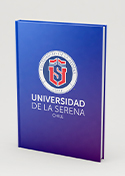Exploring the diversity and similarity of radially anisotropic Milky Way-like stellar haloes: implications for disrupted dwarf galaxy searches

Date
2023/08/09
Journal Title
Journal ISSN
Volume Title
Publisher
OXFORD UNIV PRESS
Abstract
We investigate the properties of mergers comparable to the Gaia-Sausage-Enceladus (GSE) using cosmological hydrodynamical simulations of Milky Way-like galaxies. The merger progenitors span an order of magnitude in their peak stellar mass (3 x10(8) < M-*/M-circle dot < 4 x10(9)) and include both rotation and pressure-supported galaxies (0.10 < D/T < 0.77). In a minority of cases, the GSE-like debris is comprised of stars from more than one merger progenitor. However, there is a close similarity in their chemodynamical properties and the triaxial shapes of their debris, and so it is not always possible to distinguish them. The merger progenitors host a variety of luminous satellites (0 and 8 with M-* > 106 M-circle dot), but most of these do not follow the merger to low orbital energies. Between 0 and 1 of these satellites may survive to z = 0, but with no clear signatures of their past association. We show that the fraction of stars originating from GSE-like mergers is reduced for lower metallicities (reaching a minimum around [Fe/H] = -2), and also within 5 kpc of the Galactic Centre. Whilst these central regions are dominated by in-situ stars, the ex-situ fraction trends towards a 100 per cent asymptote when considering the most metal-poor stars ([Fe/H] << -2.5). Considering this, its near proximity, and its small volume on the sky, the Galactic Centre lends itself as a prime environment in the search for the stars from the earliest galaxies, whilst avoiding contamination from GSE stars.
Description
Keywords
COLD DARK-MATTER, METAL-POOR STARS, GALACTIC HALO, SOLAR NEIGHBORHOOD, DISSIPATIONLESS COLLAPSE, COSMOLOGICAL SIMULATIONS, GAIA-SAUSAGE/ENCELADUS, FORMATION HISTORIES, GLOBULAR-CLUSTERS, HERCULES-AQUILA